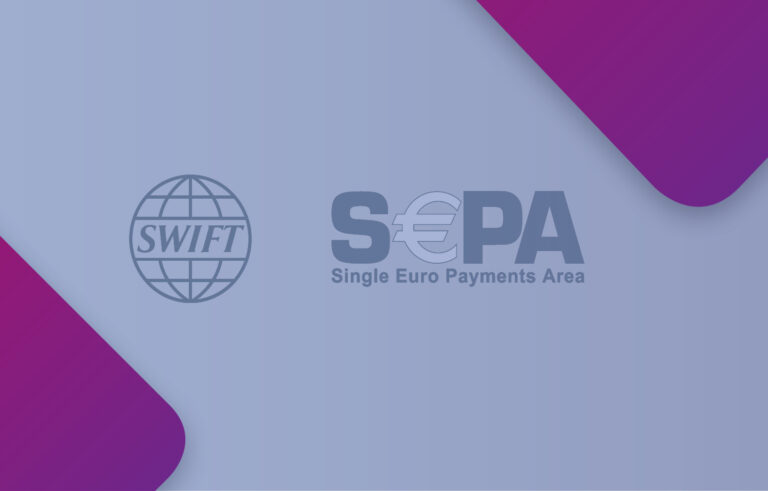
Financial analysts have long been inclined to believe that tomorrow’s world of cash flow will be fundamentally different from everything that has come before it. At the same time, the classical banking structures until recently believed, and publically stated, that they had no real alternatives. But recently, at the International Financial Congress, the head of Russia’s Sberbank, Herman Gref, opined that “traditional methods of running banking activities are receding into the past.”
Gref specified that he meant an improved virtualization of management systems and work with clients of traditional banks, while Fintech is something completely different. However, the word “Fintech” has been pronounced by the chief manager of the influential institution. And this can be considered, if not a turning point, at least a seminal event.
The key difference
Indeed, many people still think of Fintech with a certain amount of concern, preferring the familiar banking system. But which will eventually prevail in a globalized world? Let’s get into it.
To maximally simplify the matter: in traditional banking, the services are provided to customers of a particular bank which has roots (financial, political and any other) in the real world. Of course, for a long time already it hasn’t been necessary to stand in line at the bank to receive these services. Customers can access the full package of bank services remotely. Even very complex operations are carried out at a distance from the bank through a computer or mobile network, via a smartphone or an ATM. Often it makes no difference where the client is located – in his own country or abroad. That is, everything is within the system of a real bank, though outside its brick and mortar walls.
This, of course, includes internet banking, which many people mistake for Fintech. Internet banking is just one of the functions of a concrete, physical bank. In its turn, Fintech (financial technology) is something fundamentally different. It is precisely this “difference”, that many people prefer today.
Essentially, Fintech is an entire industry directly linked to the development of computer technology. Here, the technologies that are being realized in the virtual world, predominantly via the internet in the form of specific applications, are the primary ones. Once again: the technologies are primary, not their provider. So this is a very brief summary of the difference between Fintech and traditional banking.
According to global financial experts’ predictions, Fintech could lead to 30% of jobs in real banks being cut by 2025. Is this good or bad – that is a philosophical question, but the facts in this case speak in favor of Fintech. To simply ignore this phenomenon is not possible. And if, until recently, the governing bodies of the EU, for example, did not consider Fintech as a serious alternative to the banking “traditions”, this too is changing. In the spring of 2018 the European Commission published a “Fintech Development Plan” for the near future. The document contains a straightforward message: tech companies and the governments of European countries have to increase their regulatory potential and knowledge in the field of Fintech and other new technologies.
If a bank does not go to its client, then… the client goes to Fintech
The first stage of the development of Fintech was the period from the end of the 1990s until the 2008 economic crisis. At that time such companies as PayPal, Ant Financial, Alipay «mobile wallet» and others began to grow rapidly.
The second stage begins from 2008. The banks themselves brought it forward. During the crisis and in the first years that followed many of them began to raise prices for their services and were very reluctant to give loans. “Reluctant” is not even the right word. Many banks simply ceased lending to a significant number of people who did not meet particular criteria. This happened, for example, across Asia.
As a result, many young Fintech startups appeared. New financial technologies started to fill in the niches left by banks, and they moved extremely quickly, as is always the case with computer-based technology. And since lending brings in more than half of banks’ profits, it makes sense that this is exactly the segment where so many Fintech start-ups popped up.
As far back as 2015, about 500 startups were working in the Fintech space in the United States and the UK. The system of relations with clients was flexible: they offered a variety of online models, used alternative extra-bank financial resources – and eventually made people (as well as organizations and firms) the most profitable loan offers.
Of course, this has not gone unnoticed by banks. Financial “mastodons” began to join with some Fintech platforms, to the best of their abilities. For example, JPMorgan, the largest US bank, has found a Fintech partner in OnDeck. Russian Alfa-Bank created its own Fintech site – Alpha-Potok, which makes it possible for individual clients of the bank to invest in companies’ and even other clients’ debts. And it is not without a reason that many people have begun saying that this company is not only “demonetizing” its client audience, but is generally leaving the usual banking sector, gradually settling in the virtual world, with its most advanced and fast technologies.
Why are traditional bank customers switching to Fintech?
Specialists of the analytical department at JPMorgan consider Fintech to be in the process of separating from the world of “real” banking, and on its way to becoming a separate and self-sufficient financial industry. According to analysts’ data from the international company CB Insights, venture investments in Fintech, as of the end of last year, set another record. Within the framework of 1,128 deals, more than $16.6 billion was raised.
In total, for the past year, 35 mega rounds of funding (each amounting to more than $100 million) on the Fintech market totaled $ 7.76 billion. The largest amounts were invested in a variety of Fintech startups.
According to data from the European international agency Let’s Talk Payments, more than 10,000 Fintech companies, successfully working in various fields and confidently moving forward, are registered at the present moment.
It is not surprising at all that, given this state of affairs, banks that are still working within the “traditional” banking framework are experiencing a loss in profits – and are forced to increase the price of their services. And this encourages Fintech to develop even more actively. The banks themselves actually contribute to this.
Here’s what economist Dmitry Smirnov, a professor at Ventspils University College, had to say in conversation with Bilderlings.
– Why are many traditional bank clients making the switch to Fintech today? First, because of dissatisfaction with the banks. You would likely agree that not everyone, even the most respectable and upstanding citizen, is delighted when his or her life is under the constant scrutiny of the tax agency. Similarly, not every company wants the state to control financial transactions through its various structures and to have access to private information. It makes sense that a lot of people are looking for an alternative. And Fintech, non-bank settlement systems are exactly that alternative. In addition, Fintech systems are much more mobile when it comes to lending. Although, as an economist, I am convinced that the future belongs not to traditional banking – and likely not even to Fintech. Some third way will inevitably appear.
Although, according to our interviewee, for the moment traditional banking remains the more powerful system. At the macro level Fintech is not yet a competitor to traditional banking. And when it comes to solutions for small and medium-sized businesses, the Fintech system is still operating at a rather low level.
So what comes after Fintech?
According to the economist, everything is moving inexorably toward some unknown third option. On the one hand, the modern banking system has really exhausted itself, and it is necessary to move forward. Therefore, it’s logical that Fintech startups came on to the scene. But the problem remains that they, in one way or another, exist within the framework of the current financial system.
Yes, Fintech and cryptocurrencies are developing rapidly. Like all computer technologies, these systems are more elastic and mobile. But at some point they inevitably go out into the real world where the traditional money is customary to the majority of people, but no longer secured by anything. (Bilderlings recently mentioned this in a publication about the new cryptocurrency Gram.)
– Once, money was backed by the gold reserves of countries. Later it could be said that the dollar, and then the euro, were backed by securities. But now, in fact, they are backed only by debts – the obligations of companies and entire states, says Dmitry Smirnov. Large countries are immersed in titanic debts. It goes to the point of absurdity: the more money, the more debts, and not vice versa.
Even securities – stocks and bonds – have now also turned into debt obligations. It bears repeating that the system has completely exhausted itself. This was one of the reasons Fintech appeared. But in the global economy, something completely different will be born. Perhaps Fintech will become one of its components. Whatever the case, it will happen quite soon. What exactly this will look like – today this question can be addressed only to the boldest futurologists. However, I would recommend everyone prepare for this transition, – emphasizes the economist.






